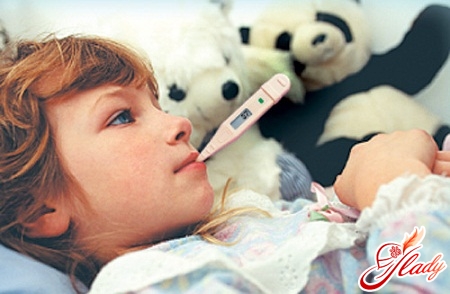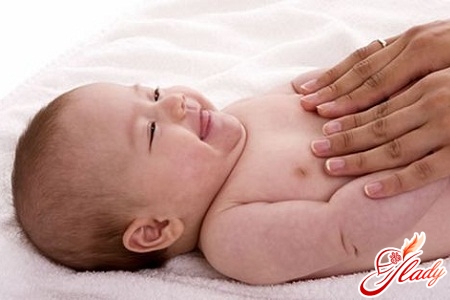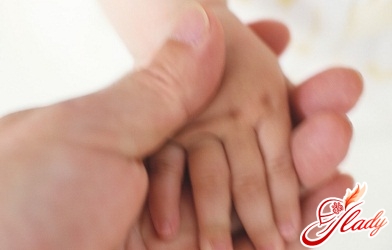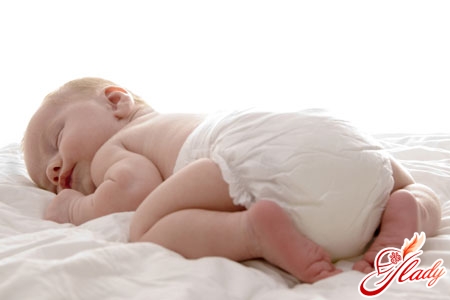 Surely everyone has heard the expression “skin likebaby". And indeed - the baby's skin is very, very delicate. However, the price for such tenderness is increased skin sensitivity. And the most common type of skin irritation is diaper dermatitis. Surely, any mother of a baby has encountered the problem of diaper dermatitis. And it is very important to take the necessary measures as soon as possible at the first symptoms of the disease to prevent the condition from worsening. This information will also be useful for those women who are just planning to become a mother. After all, it is not for nothing that they say that you need to know your enemy by sight - in this case, it will be much easier to defeat him. This article will discuss such problems as diaper dermatitis in children, treatment and its prevention. What is diaper dermatitis? Doctors call diaper dermatitis the irritation of the skin in the buttocks and thighs, which is provoked by various aggressive factors - microbial, chemical and physical. As a rule, diaper dermatitis occurs in the first few months of a child's life, due to the peculiarities of children's skin and errors in care. By the way, pediatricians note another interesting feature associated with diaper dermatitis - in those children who are bottle-fed, it occurs much more often than in their peers who are fed mother's milk. Doctors explain this phenomenon by the fact that with bottle-fed babies, enzymatic activity is much higher than with natural feeding. Simply put, in children - "bottle-fed" children, the feces are much more caustic and corrode the delicate baby skin more than in infants who are breast-fed. Diaper dermatitis has an extremely negative effect on both the nervous and psychophysical systems - this fact is confirmed not only by pediatricians, but also by pediatric neurologists. The itching and skin irritation that accompany diaper dermatitis provoke the development of various functional disorders in the child, both in the central nervous system and the vascular system.
Surely everyone has heard the expression “skin likebaby". And indeed - the baby's skin is very, very delicate. However, the price for such tenderness is increased skin sensitivity. And the most common type of skin irritation is diaper dermatitis. Surely, any mother of a baby has encountered the problem of diaper dermatitis. And it is very important to take the necessary measures as soon as possible at the first symptoms of the disease to prevent the condition from worsening. This information will also be useful for those women who are just planning to become a mother. After all, it is not for nothing that they say that you need to know your enemy by sight - in this case, it will be much easier to defeat him. This article will discuss such problems as diaper dermatitis in children, treatment and its prevention. What is diaper dermatitis? Doctors call diaper dermatitis the irritation of the skin in the buttocks and thighs, which is provoked by various aggressive factors - microbial, chemical and physical. As a rule, diaper dermatitis occurs in the first few months of a child's life, due to the peculiarities of children's skin and errors in care. By the way, pediatricians note another interesting feature associated with diaper dermatitis - in those children who are bottle-fed, it occurs much more often than in their peers who are fed mother's milk. Doctors explain this phenomenon by the fact that with bottle-fed babies, enzymatic activity is much higher than with natural feeding. Simply put, in children - "bottle-fed" children, the feces are much more caustic and corrode the delicate baby skin more than in infants who are breast-fed. Diaper dermatitis has an extremely negative effect on both the nervous and psychophysical systems - this fact is confirmed not only by pediatricians, but also by pediatric neurologists. The itching and skin irritation that accompany diaper dermatitis provoke the development of various functional disorders in the child, both in the central nervous system and the vascular system.
Features of diaper dermatitis
It has already been mentioned above that the main reason for the development of diaper dermatitis in children is the characteristics of the skin. Now let's talk about them in more detail. Features of children's skin:
It is the combination of all these factors thatleads to frequent cases of diaper dermatitis in newborns and in children of the first year of life. However, it goes without saying that for diaper dermatitis to develop, unfavorable provoking factors must be present. Such factors for the development of diaper dermatitis in children can be:
- Elevated temperature.Often parents, fearing possible hypothermia of the baby, try to dress him as warmly as possible. However, doctors - dermatologists strongly advise against doing this, since excessive overheating very often leads to the development of diaper dermatitis even in those children who receive proper care.
- Humidity and friction.With a very high degree of probability, the development of diaper dermatitis is caused by increased moisture and constant friction of the skin against the fabric of the diaper. This is why you should never leave a baby in wet diapers, even for a short time. And it is very important to pay attention to the fabric of the diapers themselves - it should be very soft - rough fabric can injure delicate baby skin.
- Effects of biological fluids on the skin.Often, diaper dermatitis is caused by contact of the baby's skin with sweat, urine, or digestive enzymes found in the baby's stool. Moreover, the longer the contact, the more severely the skin is affected. Although in this case, the individual characteristics of the child are of no small importance - for some children, five minutes is enough, while for others, half an hour is enough.
- Increasing pH levels.Often, diaper dermatitis develops due to the fact that the pH level of the skin increases significantly. And its increase can be a consequence of contact with the baby's feces.
- Pathogenic microflora.In some cases, when examining children suffering from diaper dermatitis, doctors identify another cause of the disease - the impact of pathogenic microflora. Although conditionally pathogenic microflora and various types of fungal diseases also lead to the development of diaper dermatitis in a child.
- Diarrhea in a child.Many mothers of small children who have at least once encountered diarrhea note that the child's skin in such cases becomes much more vulnerable. Moreover, this phenomenon is most often observed in cases where the cause of diarrhea is dysbacteriosis caused by one reason or another.
- Transition to new food or introduction of complementary foods.Another outbreak of diaper dermatitis is noted by pediatricians in children who have switched to new food - for example, from mother's milk to artificial formulas, or simply changed the brand of food. And, in addition, the development of diaper dermatitis can be provoked by the introduction of new products into the child's diet. And this happens because as a result of changing the baby's diet, the composition of his feces also changes.
According to pediatricians, about halfAll children in their first year of life experience diaper dermatitis regularly, over a very long period of time. In addition, there is another trend - girls suffer from this disease much more often than boys. Diaper dermatitis in children can be expressed in completely different ways. Some children experience only slight reddening of the skin, while others experience deep damage to very large areas of the skin. Some children tolerate diaper dermatitis absolutely calmly, without showing any signs of anxiety. Other babies may experience a strong feeling of itching, as a result of which they are constantly capricious, anxious, and sleep poorly. In such a case, the child constantly strives to scratch the affected area of the skin. And constant scratching greatly increases the likelihood that diaper dermatitis will be joined by an inflammatory process that develops as a result of secondary infection of the skin.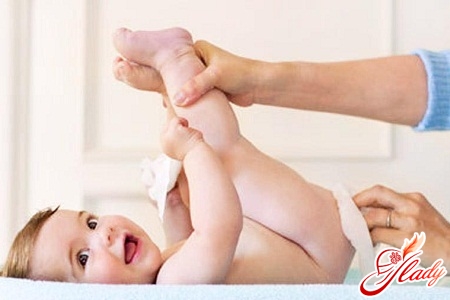
Use of diapers
Until recently they were very actively usedreusable diapers. However, in recent years they have been replaced by disposable diapers, which have quickly gained love and popularity among both parents and pediatricians. And this is not surprising - despite numerous tales - horror stories of the older generation, disposable diapers have a number of advantages. Firstly, the use of disposable diapers makes life much easier for young parents, since there is no need for constant multiple washing of diapers. But you must agree - free time is exactly what any young mother lacks. The second bright advantage of disposable diapers is the increased mobility of mother and baby - because mother can no longer worry that her child is in wet diapers. Disposable diapers are simply irreplaceable in cases when you need to leave the house - to the clinic, store, not to mention trips with the child. And finally, using disposable diapers reduces the risk of developing diaper dermatitis by almost three times. And this is not surprising - moisture is instantly absorbed into the diaper. Thus, contact of the baby's skin with urine is excluded. However, alas, disposable diapers do not protect against contact with feces. And, of course, it goes without saying that disposable diapers must be used correctly. Many parents, trying to save money, save diapers, leaving them on the child as long as they can absorb. However, this should not be done under any circumstances, because such use of disposable diapers will only increase the risk of developing diaper dermatitis. It is necessary to change the diaper approximately once every two hours. And, of course, the diaper should be changed after each act of defecation of the baby, since feces can very quickly provoke the development of diaper dermatitis. In addition, one should not forget about the existence of special children's cosmetics intended for use under the diaper and designed to additionally protect the baby's delicate skin from the development of diaper dermatitis.
Prevention of the development of diaper dermatitis
In order to prevent the development of diaper dermatitis, it is necessary to follow several simple rules of prevention. These rules include:
- Cleansing the skin
The baby's skin should be kept inideal cleanliness. Clean water should be used to clean the baby's skin, and detergents should be made specifically for children - their pH should be neutral. All baby detergents are completely free of alkaline components. However, parents should be prepared for the fact that they will have to tinker with the selection of a product - what is ideal for one baby may lead to the development of an allergic reaction in another.
- Use of "barrier" protective means
A very effective measure to prevent developmentdiaper dermatitis is the use of special protective equipment. Doctors recommend applying protective cream to the buttocks and inner thighs every time you change your baby's diaper. However, many parents play it safe and prefer to use medicinal creams containing antibiotics or, even worse, hormonal components to protect their baby's skin. Such "protection" of the skin can lead to the development of very serious complications.
- Rules for the combination of care products
There is another very stronga common mistake of many young parents: trying to protect the baby's skin as much as possible, they use both diaper cream and talc at the same time. However, such a combination is a real "explosive mixture" for the baby's delicate skin - the rolled talc can seriously injure the baby's skin.
Treatment of diaper dermatitis
To cure diaper rash,Mom will have to put in a lot of effort. However, with proper treatment, the disease will subside very quickly. The first thing to do when you notice irritation and redness of the baby's skin is to seek medical help from a doctor - a pediatrician. This must be done so that the doctor can rule out a diagnostic error. In addition, the doctor can help select certain drugs for the treatment of diaper dermatitis. In this case, diaper dermatitis will receive the most correct and complete treatment. The first and most effective measure that a mother can take is air baths for the baby. Try to put the baby out as often as possible without disposable diapers and nappies so that the affected areas have free access to air. Air baths will very soon give a noticeable positive effect, as they dry the skin very effectively. Baths with a solution of potassium permanganate are also extremely useful for diaper dermatitis. However, make sure that there are no undissolved crystals left in the water, which can cause a burn to the baby's skin. The potassium permanganate solution itself should be slightly pink. Baths should be done as often as possible. And, of course, in no case should you forget about carefully observing the rules of personal hygiene. Cleanliness is a measure not only for the prevention of diaper dermatitis, but also for its treatment. The child must be washed immediately after each bowel movement and urination, using specially designed baby detergents, which have already been mentioned above. If you follow all the above rules, your baby's skin will always please you with its softness and tenderness! We recommend reading:





